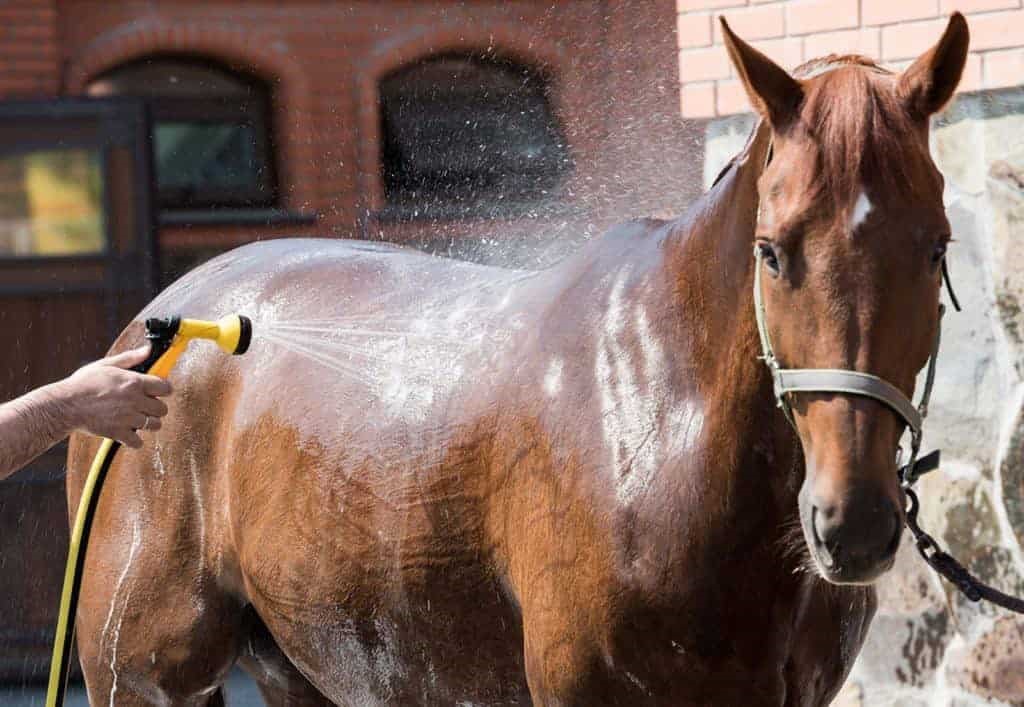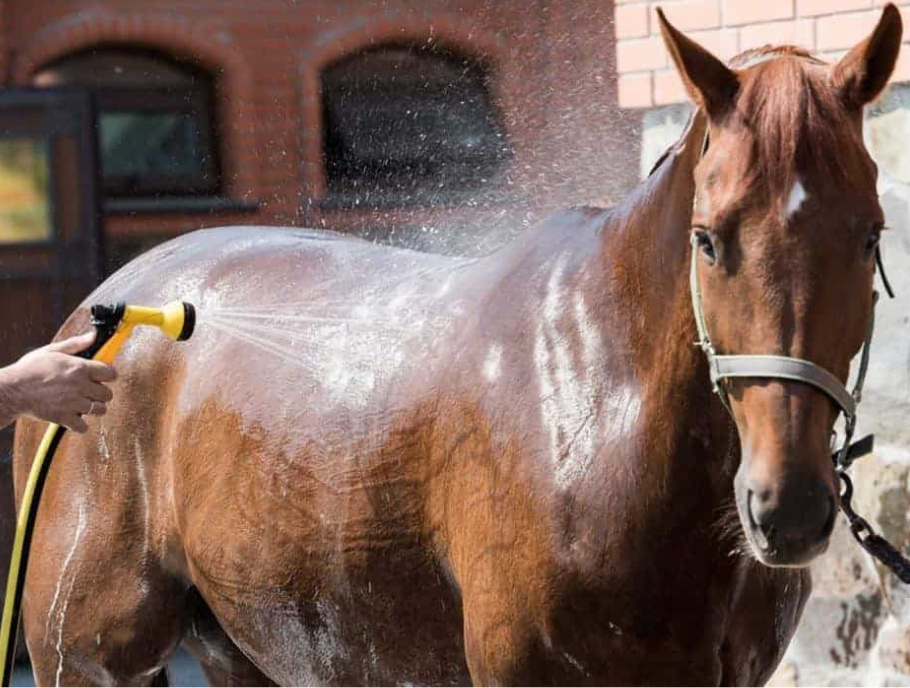By Dr Claire Moore
What is heat stress?
Heat stress is a life-threatening emergency affecting horses training in hot conditions and can be extremely dangerous for handlers. Therefore, it is important that we can recognise this condition as early as possible, and treat affected horses promptly.
Signs of heat stress include:
- Rapid or heavy breathing
- Sweat dripping from skin (indicates ineffective cooling)
- Distant, ‘glassy’ look in eyes
- Slow recovery from exercise (high heart and respiratory rates)
- Depression, disorientation, and incoordination
- Agitation, irritability
- Kicking out with hindlimbs
- Pawing
- Unwilling to move then lunging forwards
- Falling over
- Colliding with objects
How can heat stress be managed?
It is crucially important that all horses displaying any, even mild, signs of heat stress, be quickly cooled to reduce body temperature as fast as possible. Call for immediate veterinary assistance if you have any concerns that your horse may be affected by heat stress.
- If cold hosing is possible, begin this immediately (the colder, the better – iced water is ideal)
- If a hose is not available, repeatedly apply buckets of iced water
- Concentrate on cooling the large muscle groups and major blood vessels of the head and neck
- Scrape water off between rounds of cold water application
- Offer small amounts of cool water to the horse to drink
- Apply a cooling collar to the horse’s neck if available
- Closely monitor the horse for 45-60 minutes after training for signs of ‘rebound hyperthermia’
- Ask a veterinarian to check your heat-stressed horse prior to transportation
- Do not apply wet towels to any part of the horse (this has insulating effects and limits cooling)


